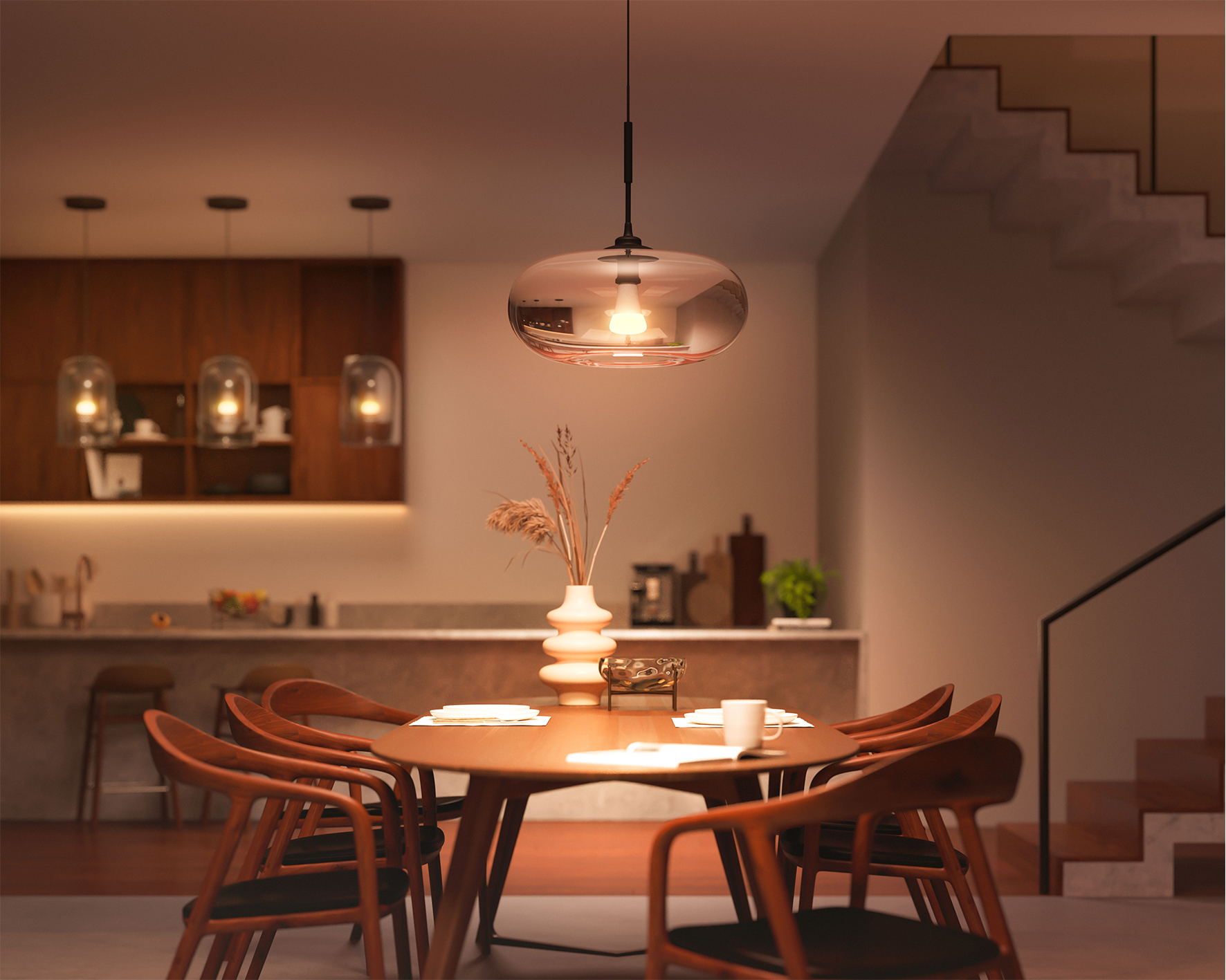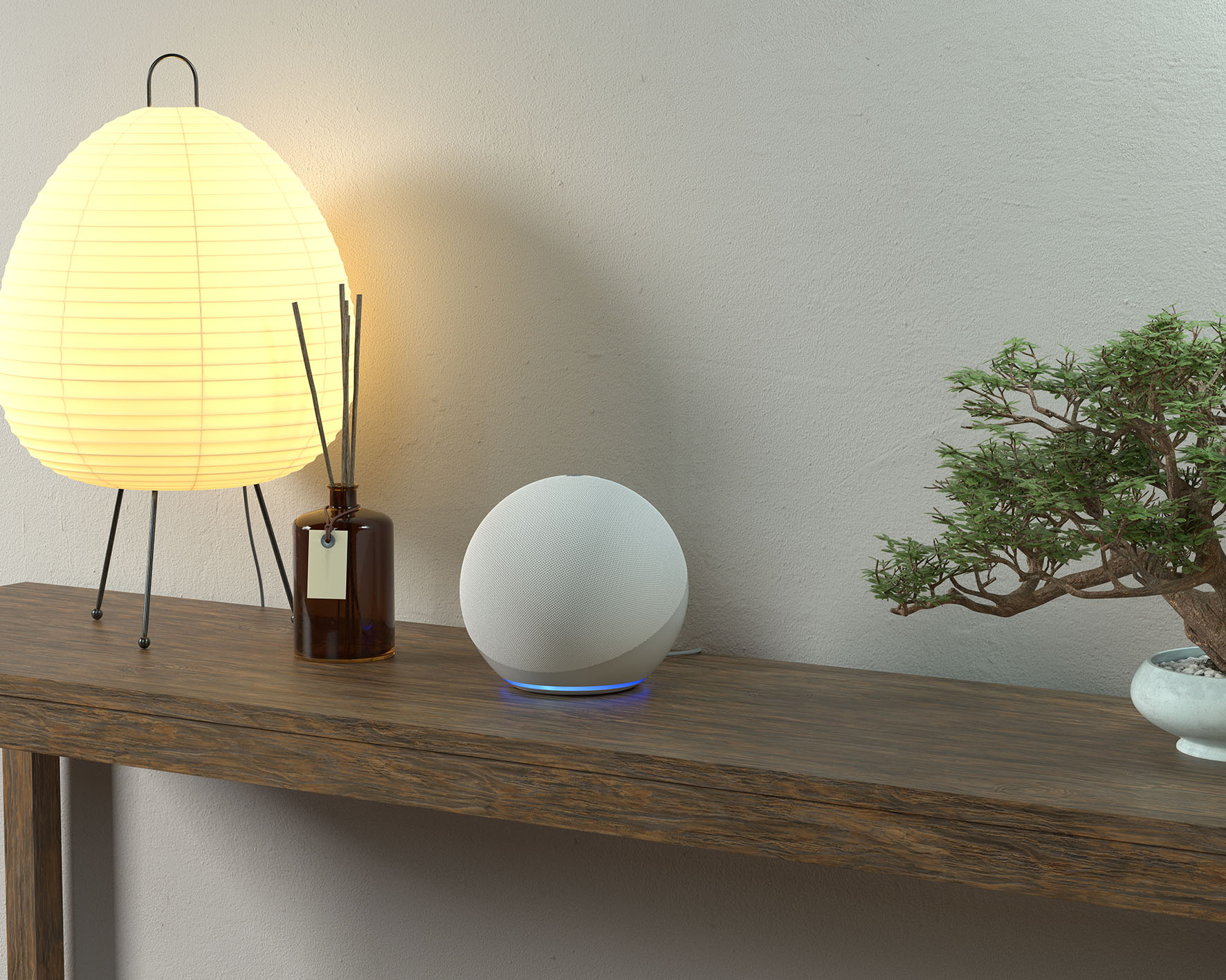How to control smart lighting with Alexa, which is so much more than just off and on
Knowing how to use smart lighting with Alexa means illumination is yours with just a quick vocal command


Knowing how to control your smart lighting with Alexa is extremely useful if you're going for the full 'I live in the future' experience.
For users of various smart speaker brands — or the other devices with Alexa built in — controlling your smart lights with your voice not only has a certain wow factor, but it can be extremely convenient too. As someone whose bedroom light switch is comically far away from the bed, being able to turn off the lights while lying down has saved me an awful lot of stubbed toes over the years.
But there’s more to controlling your smart lighting with Alexa than just turning lights on and off. With the power of Alexa’s AI, you are on the path to having an automated home. Yes, you can adjust the brightness, change the colors, and even set lights to turn on and off at set times automatically. Here’s how to control your smart lighting with Alexa.
How to control smart lighting with Alexa
Do I need Alexa to use smart lighting?

No, it’s distinctly optional — but I would say the convenience makes it essential in real terms.
Without the best Alexa speaker, you’ll be using the automated lighting maker’s own app to control things. That means every time you want to adjust the lights, you have to pull your phone out of your pocket, unlock it, track down the app and find the right control — objectively less convenient than just saying “Alexa, turn on the light.”
Smart bulb, smart switch or smart plug?
There are a few ways to get Alexa controlled smart lighting in your home, and you don’t actually need a smart light bulb.
It’s all about where the smart component actually sits, but essentially something needs to be connected to WiFi for it to function. That could be the smart bulb itself, but it could equally be a smart light switch or a smart plug with a regular old lamp attached.
The Livingetc newsletters are your inside source for what’s shaping interiors now - and what’s next. Discover trend forecasts, smart style ideas, and curated shopping inspiration that brings design to life. Subscribe today and stay ahead of the curve.
The latter two options are, of course, less flexible — you can’t make a regular lightbulb change colors, and controls are a binary choice of ‘on’ or ‘off’ (unless your smart switch has a built-in dimmer) — but they’re a relatively inexpensive option to make ‘dumb’ bulbs smart.
There’s nothing stopping you mixing and matching smart bulbs, smart light switches and smart plugs throughout your home if you like. Just don’t connect a smart bulb to a smart lightswitch — you won’t gain any functionality, and it’ll just confuse things.
How to add a smart light to Alexa

This depends on the exact solution you’re adding to your smart home. The bulb in my bedroom is a Xiaomi smart bulb from a few years back, and it required a specific Alexa skill to be activated.
But as Alexa has grown in popularity, companies have better integrated with Amazon’s API and generally smart bulbs are much more streamlined nowadays. The vast majority can be added directly via the Amazon Alexa app:
- Install your light bulb, switch or plug. Sometimes, this will also require you to install the manufacturer’s own app.
- Open the Alexa app on your smartphone.
- If you have an especially intelligent smart device, Alexa may have automatically added it, so check under the ‘Devices’ button in the bottom right-hand corner of the screen.
- If your device hasn’t appeared by itself, tap the ‘plus’ icon in the top right-hand corner.
- Tap ‘Add Device’.
- Select the kind of device you’re trying to add, whether it’s a bulb, a plug or a switch.
- Choose the brand you’ve bought from the list that pops up.
- Follow the on-screen instructions. Typically, this will involve linking your account for your smart device (GE, Philips, Wyze, Belkin, etc.) with your Amazon one, and then authorizing Alexa to access said account.
If you plan on having multiple smart lights throughout the house, it makes sense to give each one a sensible, easy-to-remember name. That means you can just say “Alexa, turn on the bedroom light” and the Echo won’t get confused and illuminate the wrong room.
How to control your smart lights
Now you know how to use smart light bulbs, you should now be good to go, with your smart light fully controllable by Alexa. What that means in practice is that you can sidestep the manufacturer’s own app and use your voice instead.
The exact supported voice commands will depend on what solution you’ve opted for, and what its limitations are. As mentioned previously, smart light switches and plugs tend to be a binary on/off choice, but smart bulbs can also have adjustable brightness and as many as 16 million colors to choose from.
Adding to the ever-growing list of the best Alexa skills, here are some voice commands to try. The specific phrasing will depend on any names you’ve applied.
- Alexa, turn on [light name]
- Alexa, turn off the light
- Alexa, make the [light name] turn green
- Alexa, make [room name] warmer/cooler
- Alexa, dim the lights
- Alexa, set [light name] brightness to 10%
Making the lighting smarter
In the last section, some commands mentioned room names, and others mentioned the light name. That’s in part to do with how you've set up Alexa, but if you’re a multi-Echo household, you can also make your smart lights a bit smarter with context-aware lighting.
That means that you can simply say “turn off the lights” to the Echo in your living room, say, and only the lights near the smart speaker will go dark. You could still tell the living room Echo to turn off the bedroom lights, if you like, but you’d have to be more specific. It’s a slightly more natural way of communicating with Alexa.
To do this, you have to assign your lighting to a specific Echo group. Here’s how to do that.
- Open the Alexa app, and switch to the Devices tab.
- Tap the plus sign in the top right-hand corner and then select ‘Add Group’.
- Name the group to your liking, and then add lights to it.
- Choose which Amazon Echo is assigned to your lighting group, and then tap ‘Save’.
Beyond this, there are other neat things you can do to automate your smart home lighting. With Alexa’s routines, you can set your lights to come on at a set time of day like clockwork, or make the lighting work as part of a wider instruction.
You could, for example, make saying “Alexa, good morning” trigger the smart lights to come on in your bedroom, and for the Echo to give you a daily news briefing. The limit really is your imagination — to get started, tap the three lines at the top left-hand corner of the app, select “Routines” and play around with the options.

Freelance contributor Alan has been writing about tech for over a decade, covering phones, drones and everything in between. Previously Deputy Editor of tech site Alphr, his words are found all over the web and in the occasional magazine too. He often writes for T3 and Tom's Guide. When not weighing up the pros and cons of the latest smartwatch, you'll probably find him tackling his ever-growing games backlog. Or, more likely, playing Spelunky for the millionth time.